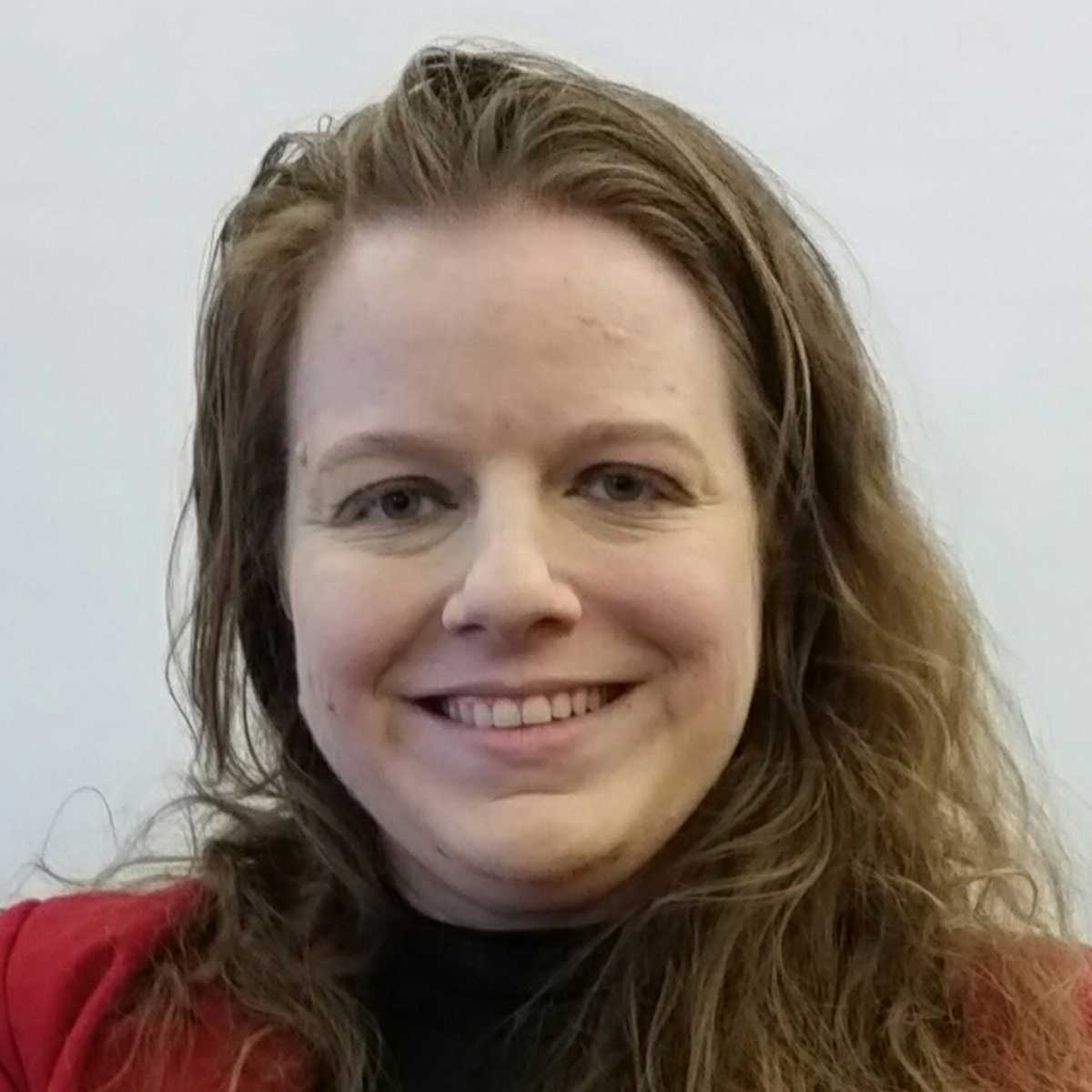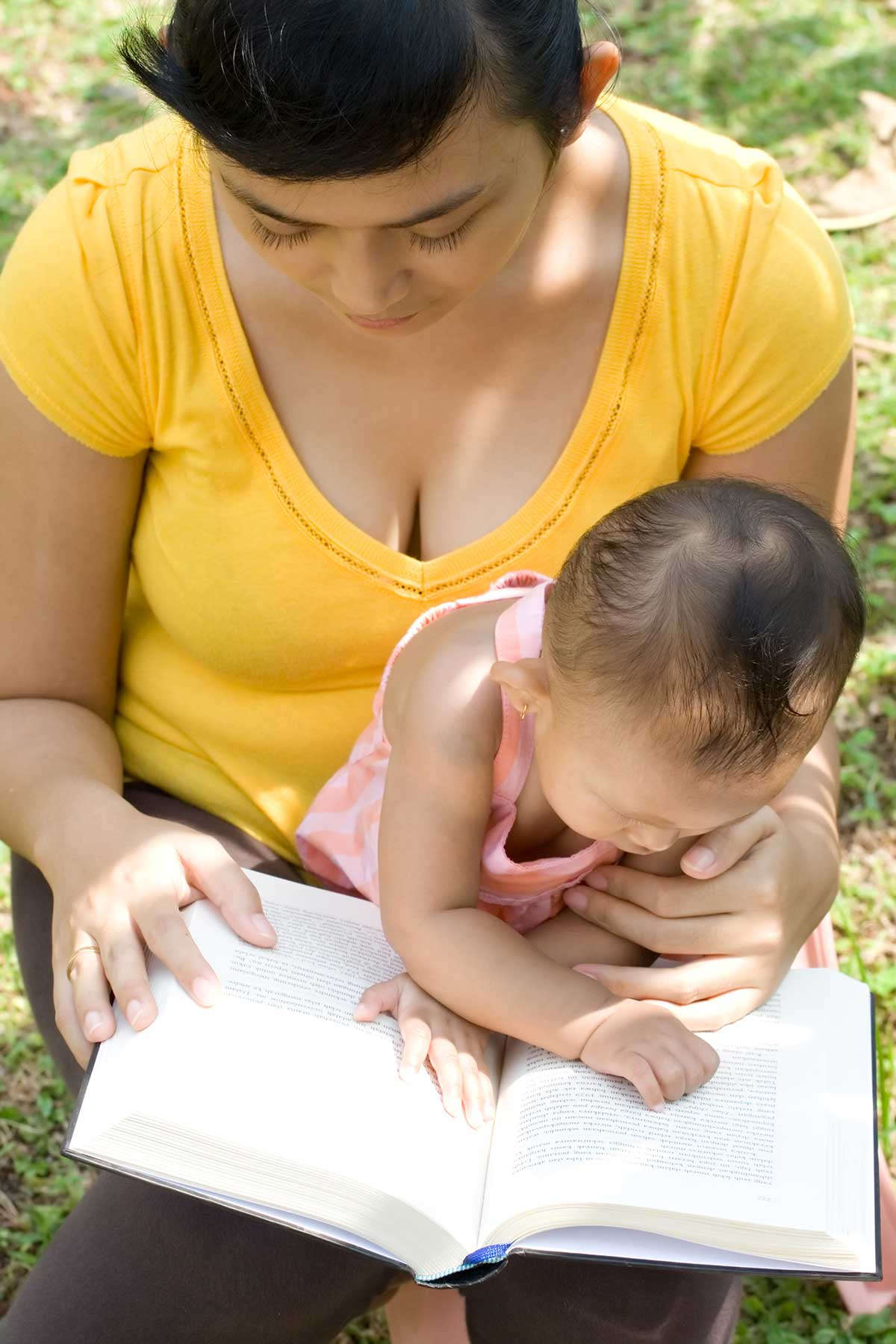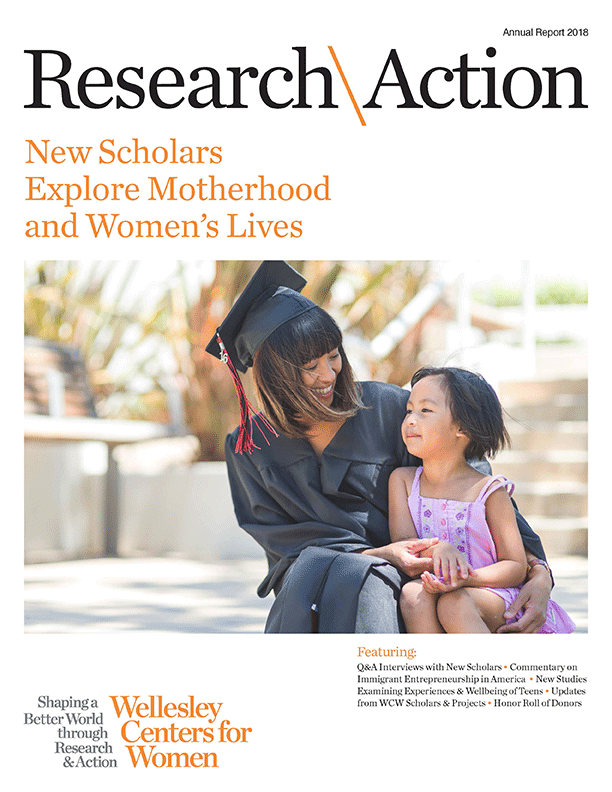Autumn Green , Ph.D., is an applied sociologist whose research focuses on access to higher education for student parents. Her current work includes the first comprehensive research study on resources and programs for student parents at colleges and universities in the U.S.
, Ph.D., is an applied sociologist whose research focuses on access to higher education for student parents. Her current work includes the first comprehensive research study on resources and programs for student parents at colleges and universities in the U.S.
What brought you to the Wellesley Centers for Women?
I always identified as a sociologist and a researcher. At my previous institution, my job involved a lot of administrative work, but what really makes me happy is being out in the field, working with people, working with students, being in the classroom—you know, really doing the things that I feel are making an impact. So I knew that I wanted to make a transition to being more in the field, doing more research. And one of the things I love about the Centers is that there’s a whole community that supports this work. It’s a wonderful, inclusive feminist space that supports women in very diverse contexts and ideas.
And you’re currently working on a manuscript funded by a Russell Sage Presidential Award. How did that project come to be?
My co-awardee on the Russell Sage Award, Amanda Freeman, Ph.D., is actually my friend from graduate school. Amanda’s data was on ways we get families out of poverty through education, how they get to college in the first place, and what happens along that path. My data was really about what happens once they get to college. So we said, ‘Let’s do one book manuscript together.’ We want this book to reach policymakers, to reach higher education administrators, and to be accessible to the general public.
At the end of the day, the storyline has been: you got pregnant, you had a baby, now you have to drop out of college. And so at the most fundamental level, both of us want to change that narrative—we’re really challenging major status quo issues.
Another real strength that I think we bring to this work is that we were both student parents when we were conducting this research. Because of this, both of us had a very strong rapport with the participants that we worked with and our very collaborative research approach allowed us to include student parents throughout the process.
Who are student parents? How big of a population is this in the U.S.?
 Based on 2012 data, there are a little less than 5 million student parents making up 26 percent of all undergraduate students. Traditional students make up somewhere between 22 and 29 percent of U.S. undergraduates. That means there are about as many, if not more, student parents than there are traditional students in the U.S. This is a huge population. It’s a group that is incredibly disadvantaged, facing all kinds of challenges from intersectional experiences, juggling work-family priorities, navigating public assistance bureaucracies, while trying to go to school and raise kids.
Based on 2012 data, there are a little less than 5 million student parents making up 26 percent of all undergraduate students. Traditional students make up somewhere between 22 and 29 percent of U.S. undergraduates. That means there are about as many, if not more, student parents than there are traditional students in the U.S. This is a huge population. It’s a group that is incredibly disadvantaged, facing all kinds of challenges from intersectional experiences, juggling work-family priorities, navigating public assistance bureaucracies, while trying to go to school and raise kids.
One of the things that I think is really important in framing this issue is that the majority of student parents are women, and many of them are women of color. Half of African American female undergraduate women are moms. Half. Pacific Islander female students—over a third are moms. Latina students—over a third are moms. This is out of all undergraduate students in the country. So we’re talking about a population that is intersectionally located as women of color, as low income, as single parents, as young parents, or women who are going through major life transitions as older parents.
How do student parents achieve compared to traditional students?
For student parents who start their studies at a four-year institution like Wellesley, within six years from the first time that they were freshmen, only 17.4 percent have finished their bachelor’s degree by comparison to 59 percent for the general population.
Graduation rates for student parents are really funny. Schools don’t track students that transfer to another institution or students who take longer than six years from the first time that they were freshmen. Most student parents stop in and out of college at least three times before they graduate. Most student parents transfer. Many take more than six years to finish their degrees. And we have no data on any of those students.
Institutions internally, though, can track this. You just need to have the institutional will to do it. So one of the things that I’ve been part of over the past four years is called the Family Friendly Campus Toolkit. My colleagues at Endicott College helped to develop this based on a research collaboration on baccalaureate student parent programs that we did together, and then we partnered with eight two- and four-year institutions to pilot the toolkit. Now, each of these eight institutions can tell us how many student parents are enrolled at their institution, or at least how many claimed a child on their student financial aid application. They are also using new systems to identify and track student parents and to form institution-wide taskforces aimed at improving supports and services for them. They can tell us their needs, demographics, and persistence and degree completion rates so they can specifically see how well they are serving their student parent population, especially in comparison to the general student population.
What can colleges and universities do to support student parents?
he average time it takes for a student parent to finish a bachelor’s degree is ten years. We want to shorten that. It took me five. But you know, I had the support. It wasn’t a comprehensive or wraparound student parent program, but I went to a university that had family housing, on-campus child care, a scholarship that helped me pay for necessities. I had a lot of resources that I was able to leverage. And one of the things that I’m doing now is exploring how we can impact the entire higher education system at a national or regional level to make sure that all higher education institutions are bound and required to address the needs of student parents.
My current research is the first comprehensive study of student parent programs in the country. And we’re doing it region by region. We looked at every college or university that is accredited within the New England Association of Schools and Colleges and the Middle States Commission on Higher Education and created the Find Your Way Guide for prospective student parents. We are now about half way through the Southern Association of Schools and Colleges as well, as part of a partnership with the Sociology Department at the University of Houston. We found family housing, we found campus child care and off-campus child care partnerships. We asked, ‘Is there some sort of office that you can go to as a student parent and ask for help?’ Now we’re expanding the Find Your Way Guide and looking at the rest of the country. We also have a national database of colleges and universities with family housing that is currently available online. Through the data we are currently collecting we want to identify the disparities, what is the need versus how much of the need is being addressed. We want to learn about these programs in depth so that we can share the best practices, how they can be replicated, how colleges and universities can do more. It’s important. It’s making that real big national-level impact.
What do you see as the future of this work?
 The next thing I’m hoping to do more with, as I’ve been developing it for the past four years, is called the two-generation classroom. It came out of my experience teaching in an urban associate’s degree program. I was teaching a freshman seminar and every single one of my students in that class was a low-income mom. And the two-generation classroom came out of this idea where I said, “What if the kids could come to class with the moms, and what if we actually designed the curriculum to include them and engage them as learning partners?” I developed a curriculum that would allow parents to earn credit toward the general education core in these classes. There’s an online component where they do college-level readings, discussion posts, group work, but when they come to class, they bring their kid and the curriculum is designed around learning the material in a way that is shared with the two generations. The curricula really aim to simultaneously reduce the traditional educational barriers faced by student parents, while embracing their individuality and strengths as learners. I also expect that it will have significant positive impacts on the children who participate with their parents. I’m looking for funding right now to do a pilot at an institution that has a large population of student parents.
The next thing I’m hoping to do more with, as I’ve been developing it for the past four years, is called the two-generation classroom. It came out of my experience teaching in an urban associate’s degree program. I was teaching a freshman seminar and every single one of my students in that class was a low-income mom. And the two-generation classroom came out of this idea where I said, “What if the kids could come to class with the moms, and what if we actually designed the curriculum to include them and engage them as learning partners?” I developed a curriculum that would allow parents to earn credit toward the general education core in these classes. There’s an online component where they do college-level readings, discussion posts, group work, but when they come to class, they bring their kid and the curriculum is designed around learning the material in a way that is shared with the two generations. The curricula really aim to simultaneously reduce the traditional educational barriers faced by student parents, while embracing their individuality and strengths as learners. I also expect that it will have significant positive impacts on the children who participate with their parents. I’m looking for funding right now to do a pilot at an institution that has a large population of student parents.
The two-generation classroom curricula have come together from my direct work with student parents and their kids, along with academic and theoretical perspectives on education, on sociology, on what the challenges are, and really working to create a very applied and direct intervention that changes the way we teach and learn. And, you know, it’s something that I think in the long term could really revolutionize the way that we teach in college.


